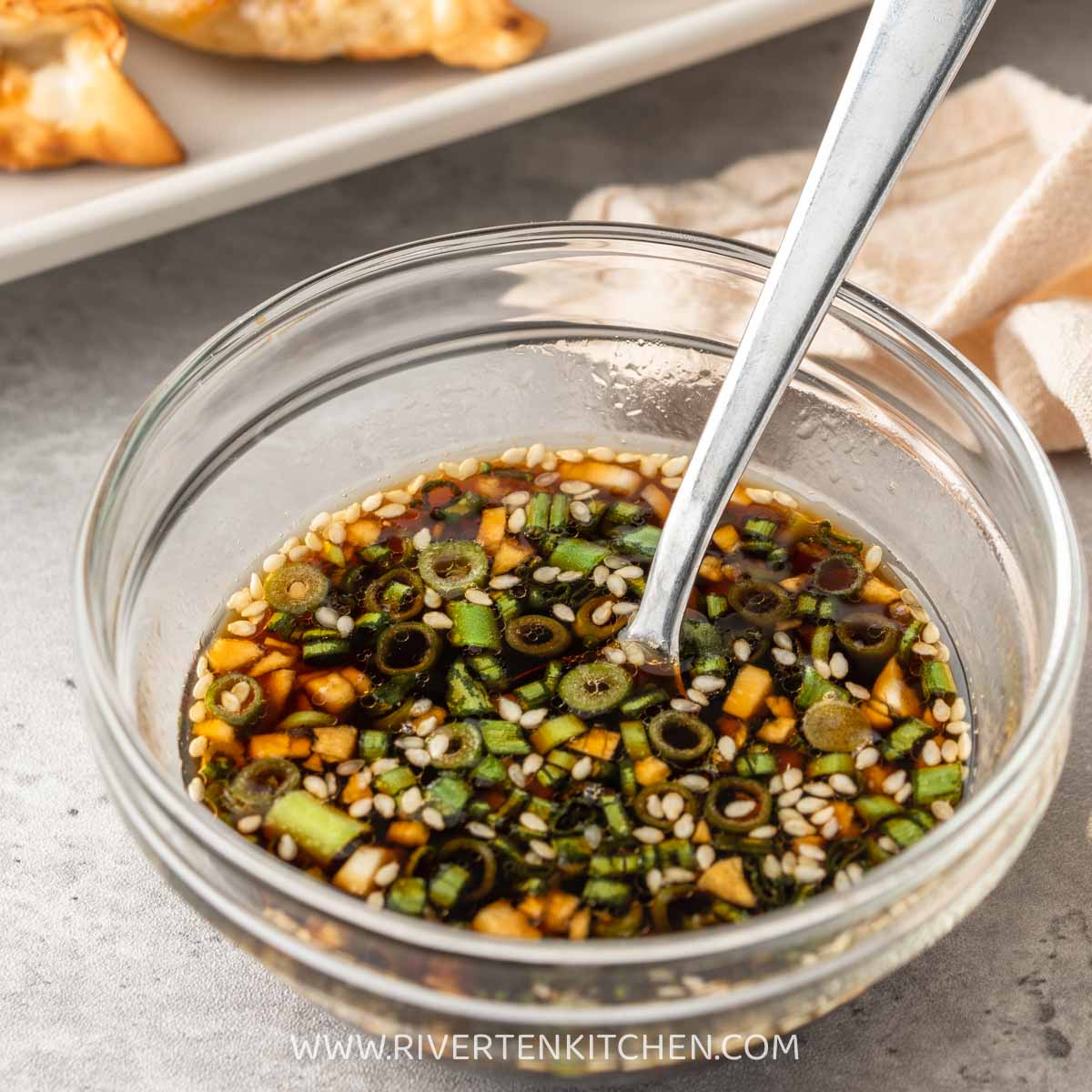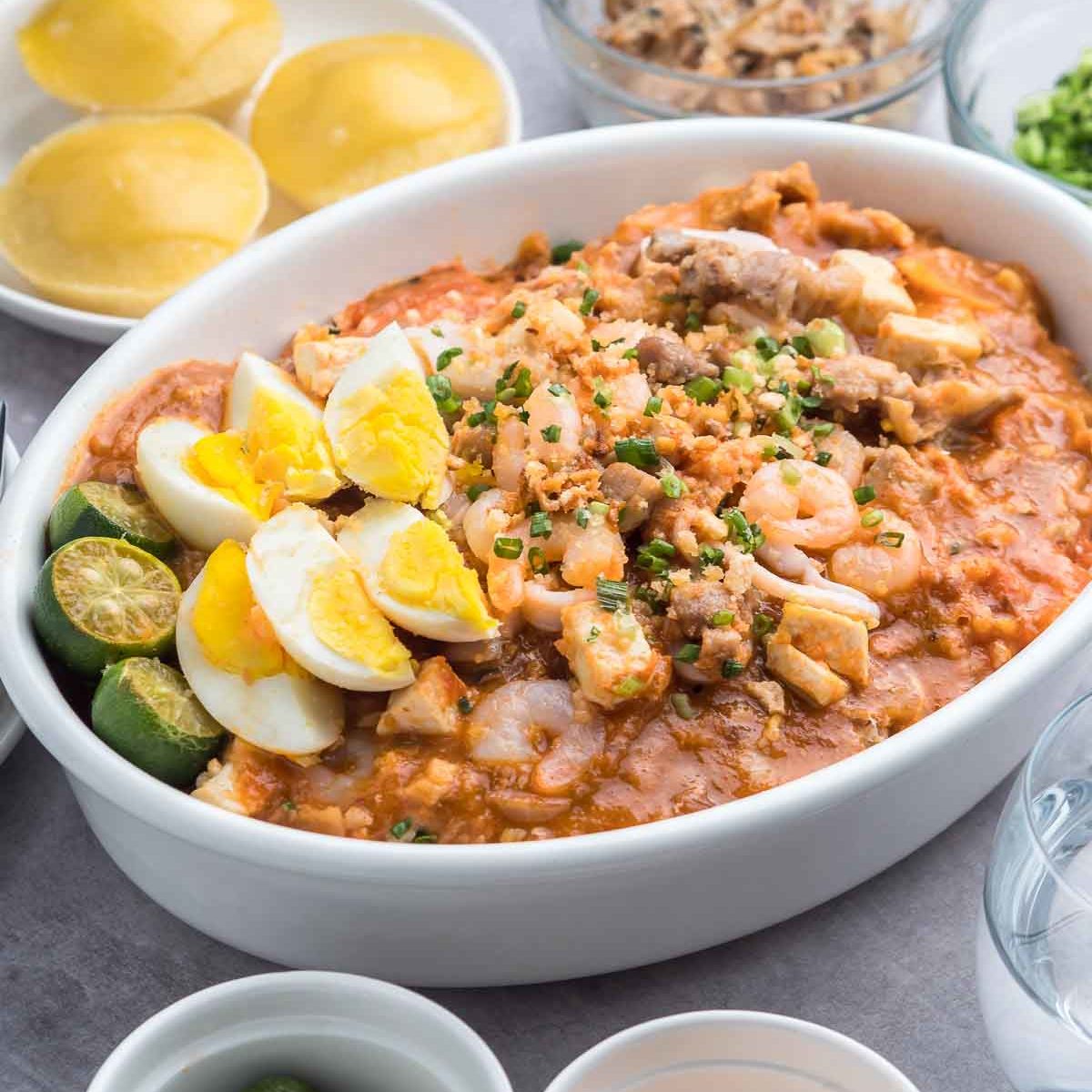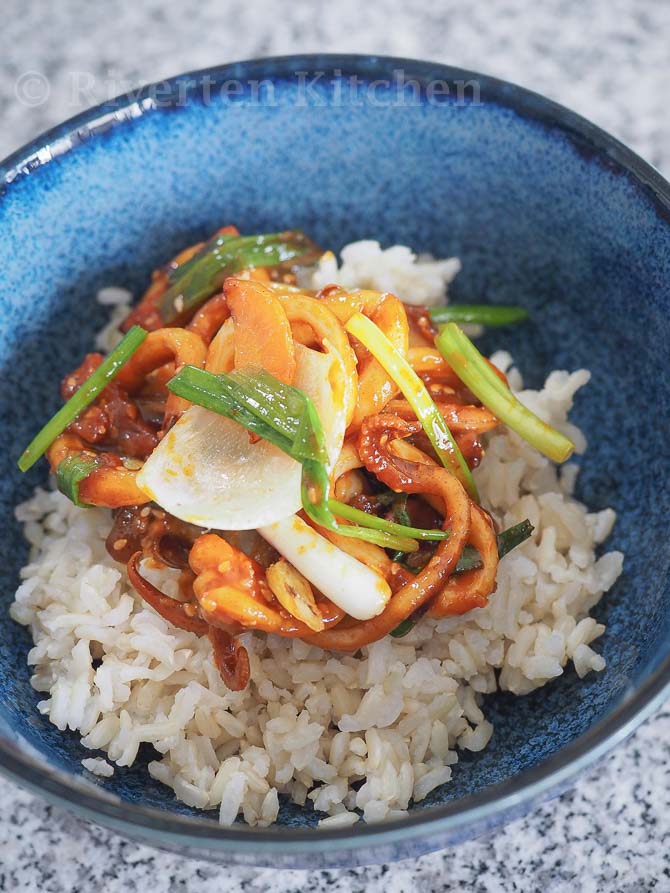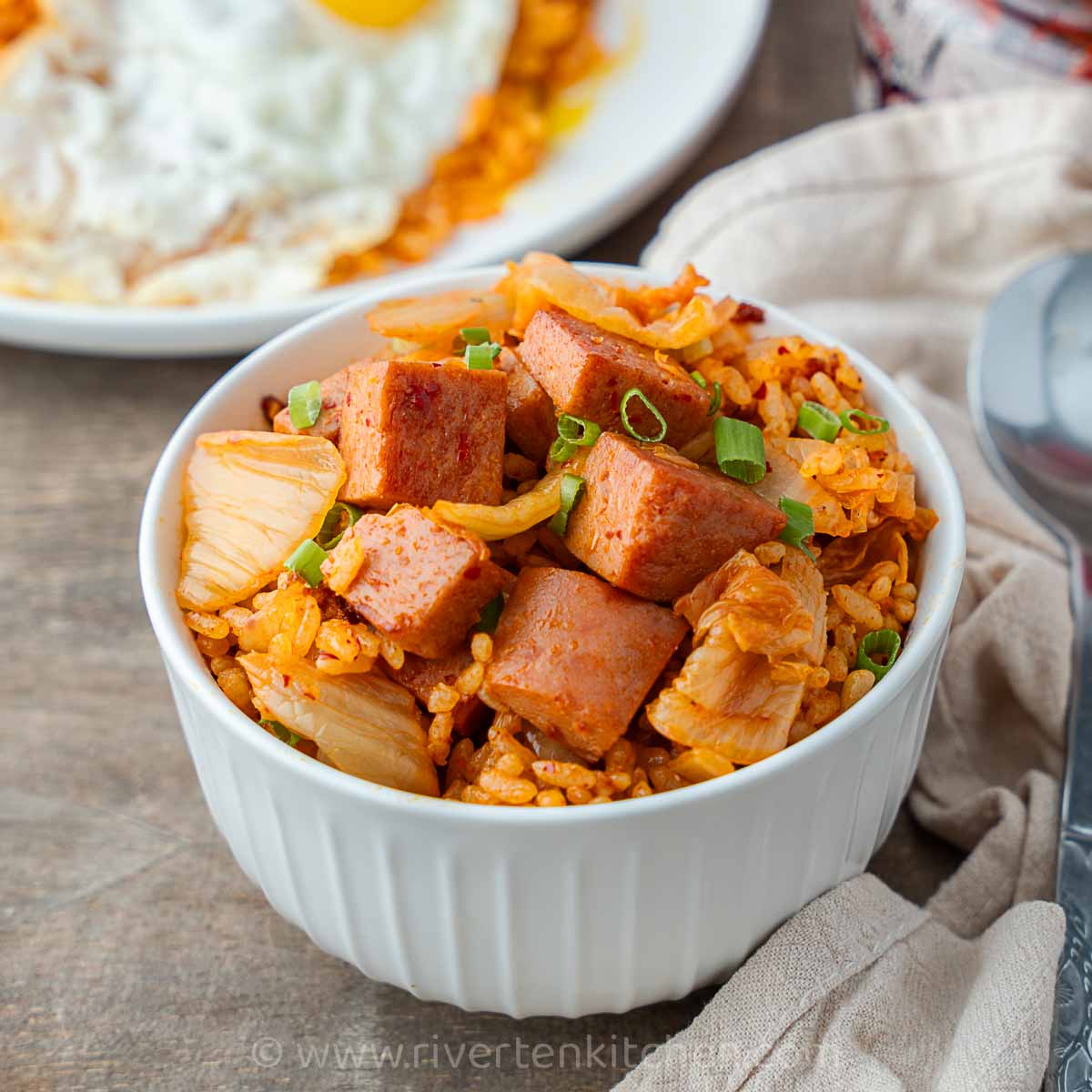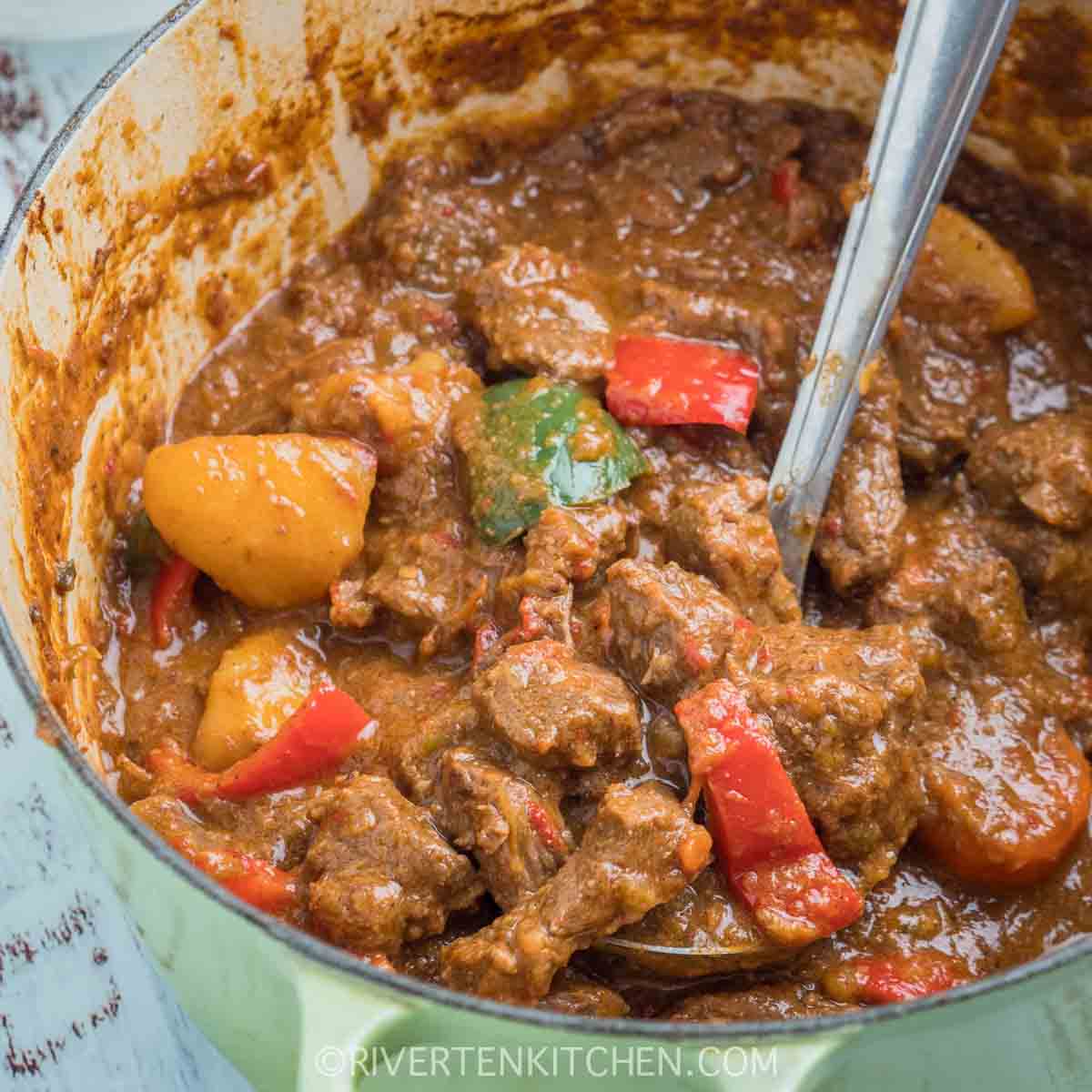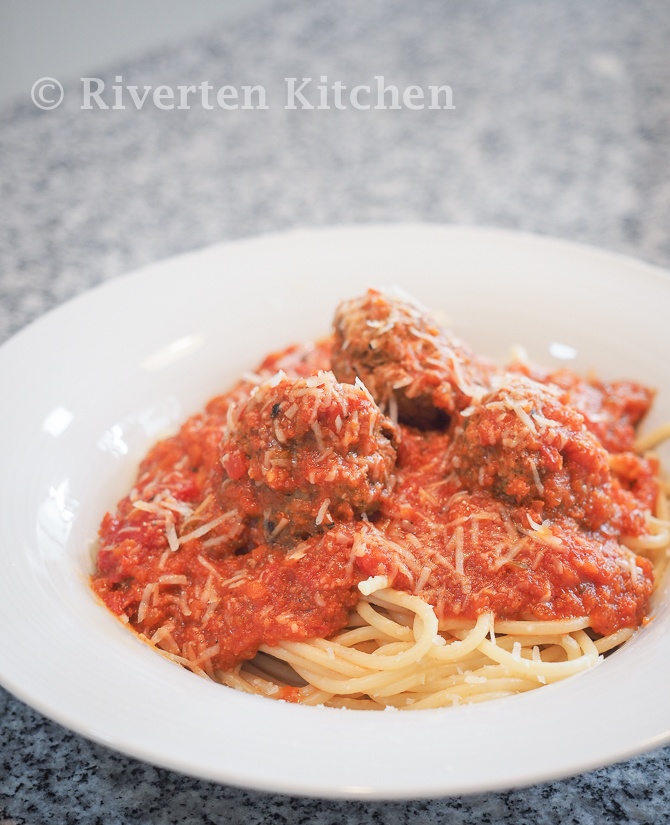Great for whipping up a portion of small serving japchae. This recipe is all about keeping things simple and delicious, ready in under 30 minutes. No need to stress about cooking each veggie separately – this time, we’re throwing everything into one pan.
Imagine soft, springy noodles, paired with tender-crisp veggies, all coated in a sweet-savory, sesame-infused sauce.
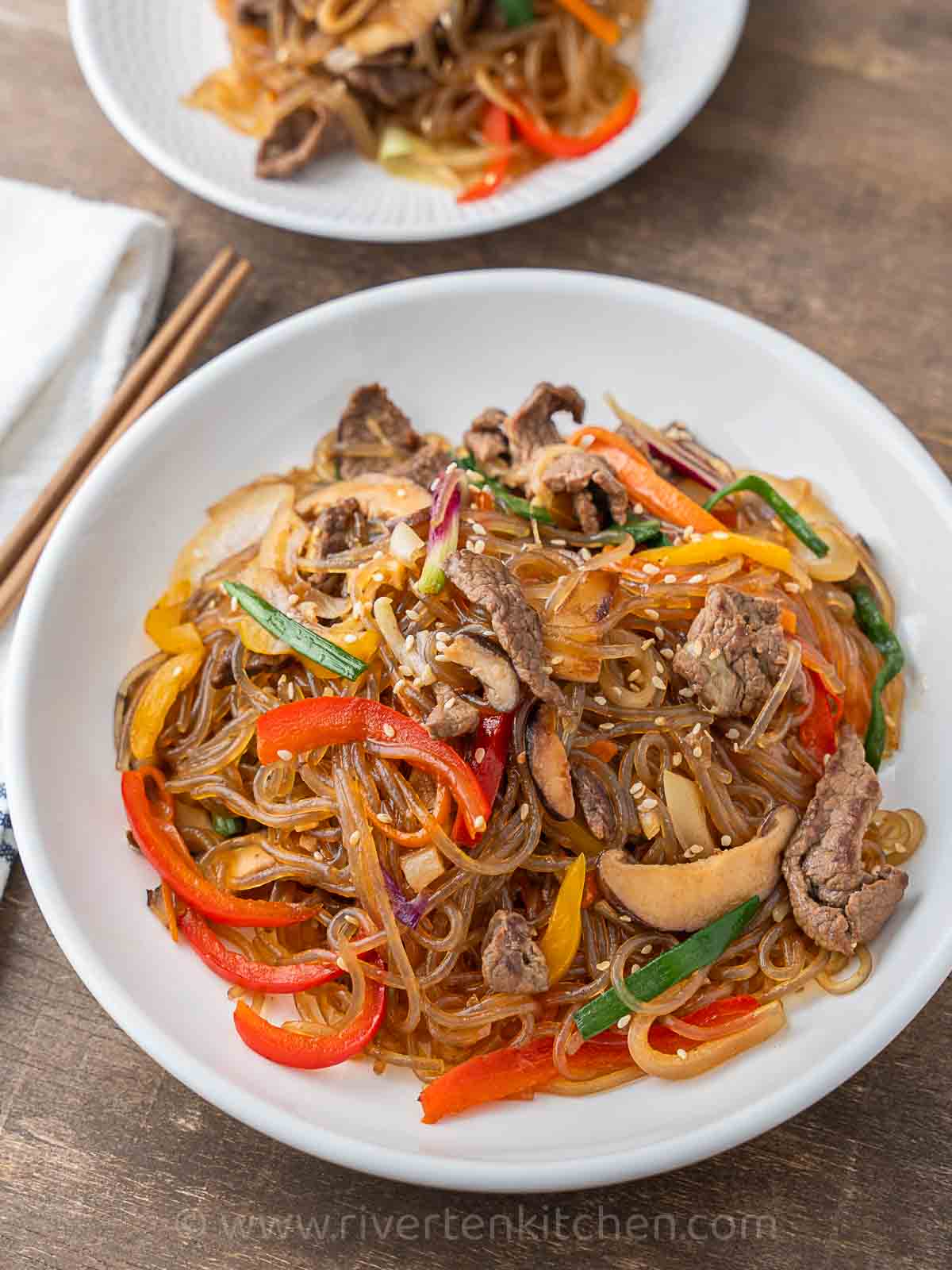
Easy One Pan Japchae Recipe
Ready to give a classic Korean favorite a modern twist? Say hello to our fresh take on Japchae! No need to fuss over cooking each veggie separately this time. We’re all about convenience here – we’re tossing everything into one pan and making magic happen. And guess what? The result is pretty close to the traditional deal, if not better 🙂
Traditional Japchae
If you’ve never made Japchae before, here’s a brief overview:
Japchae is a classic Korean noodle dish that is made from various ingredients such as glass noodles (sweet potato noodles), vegetables like carrots, spinach, and mushrooms, protein sources like beef or tofu, and sometimes pork then slathered with sweet-savory sauce and sesame oil.
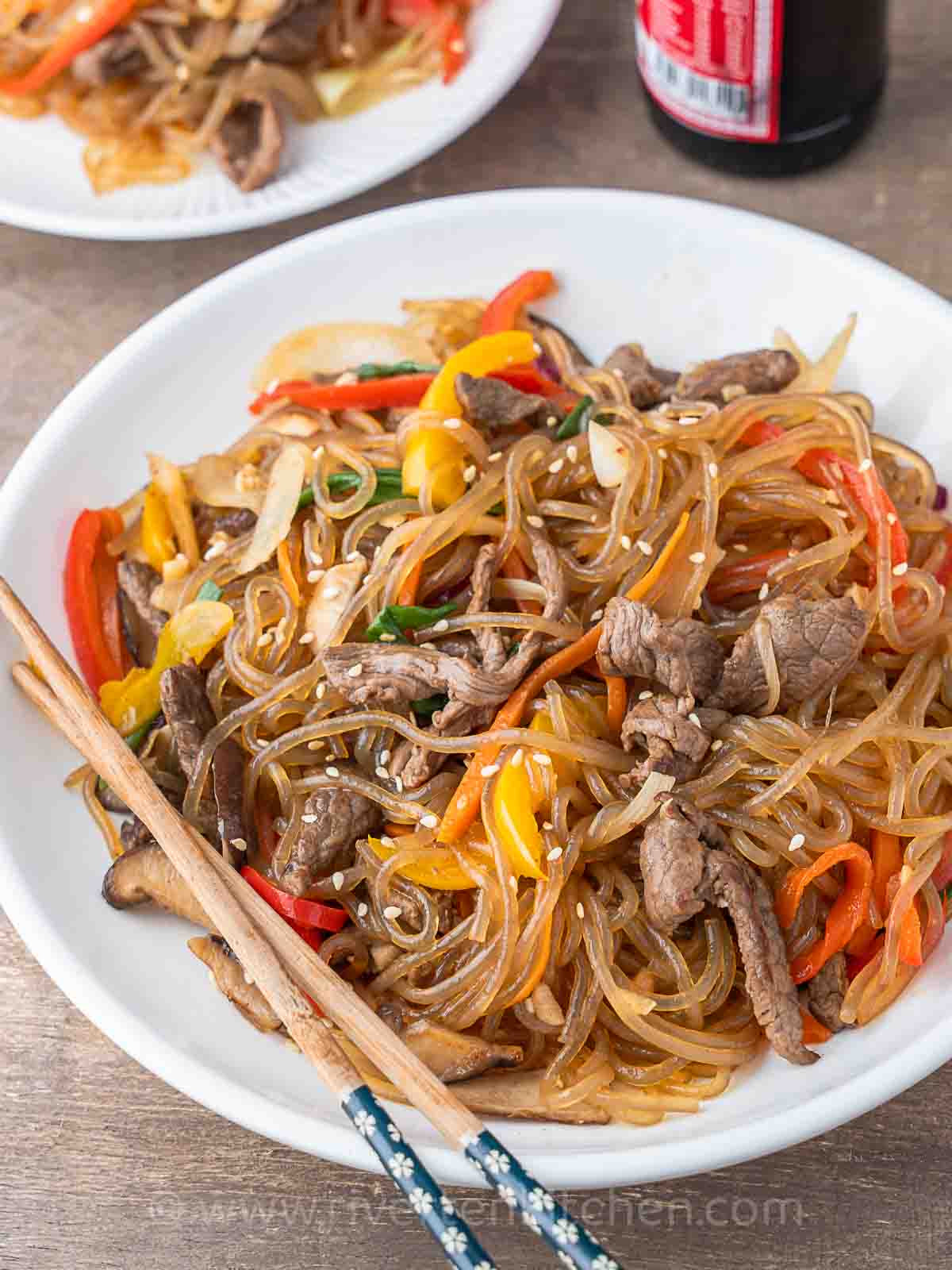
Traditionally each of these components is individually prepared and then mixed together. Hence the term “Japchae” comes from “jap,” meaning mixed or stirred, and “chae,” referring to thinly sliced vegetables or ingredients. Essentially, “Japchae” essentially signifies a dish where various ingredients are mixed together
Japchae Ingredients
Here are the essential ingredients you need to make japchae:
Meat
When it comes to protein in japchae, tender beef options like sirloin steak, ribeye, tenderloin, and top sirloin are popular choices. If you’re looking for budget-friendly choices, skirt steaks, flank steaks, and flat iron steaks also work great
To prepare, slice meat into thin strips then marinate in mirin and Japchae sauce. Here I used pre-cut beef labeled “for stir-fry” for convenience.
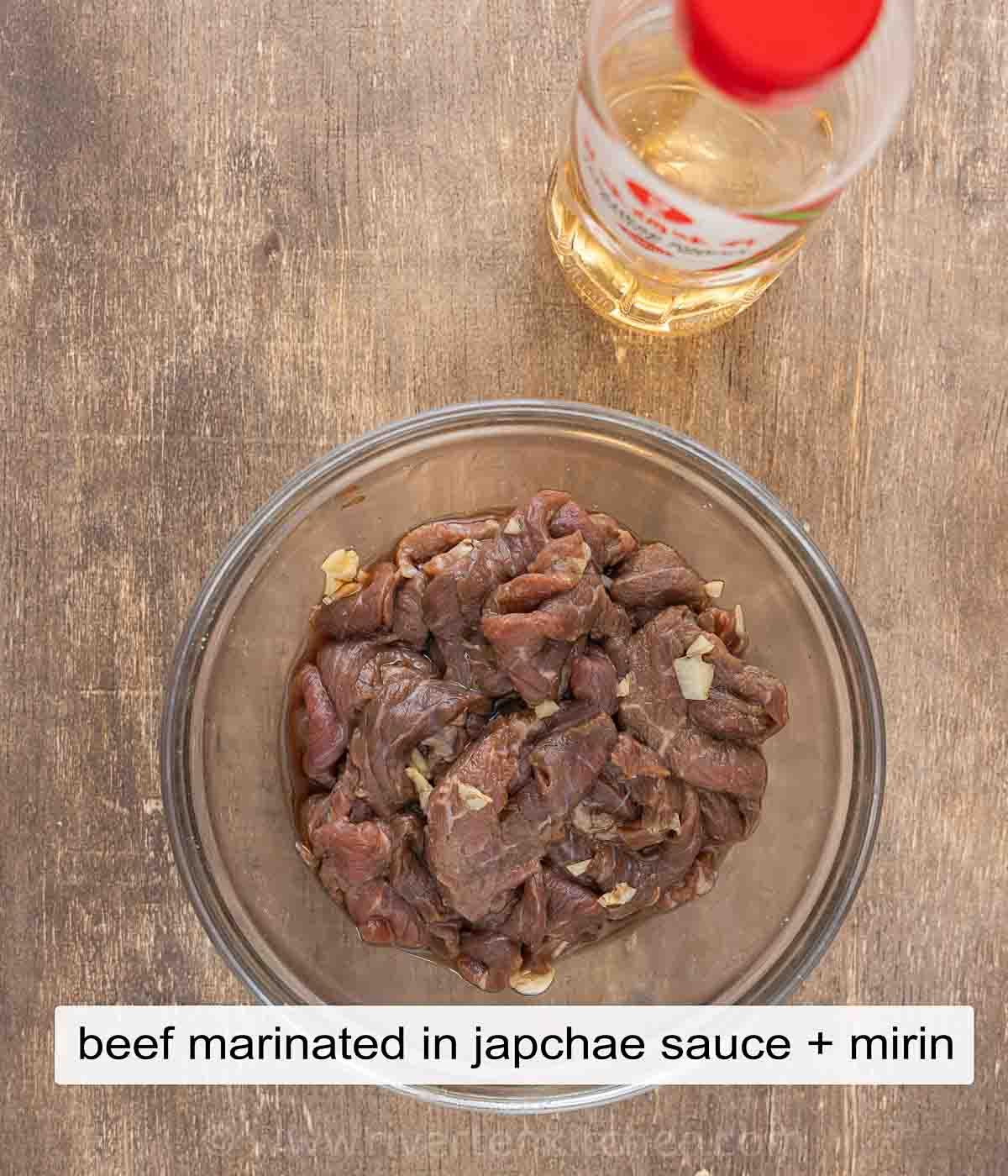
If you’re looking to switch it up, pork tenderloin works as a beef alternative, and for a vegetarian twist, tofu does the trick in this japchae recipe.
Japchae Noodles
The noodles traditionally used for Japchae are made from sweet potato starch and are commonly referred to as “glass noodles” due to their translucent appearance when cooked.
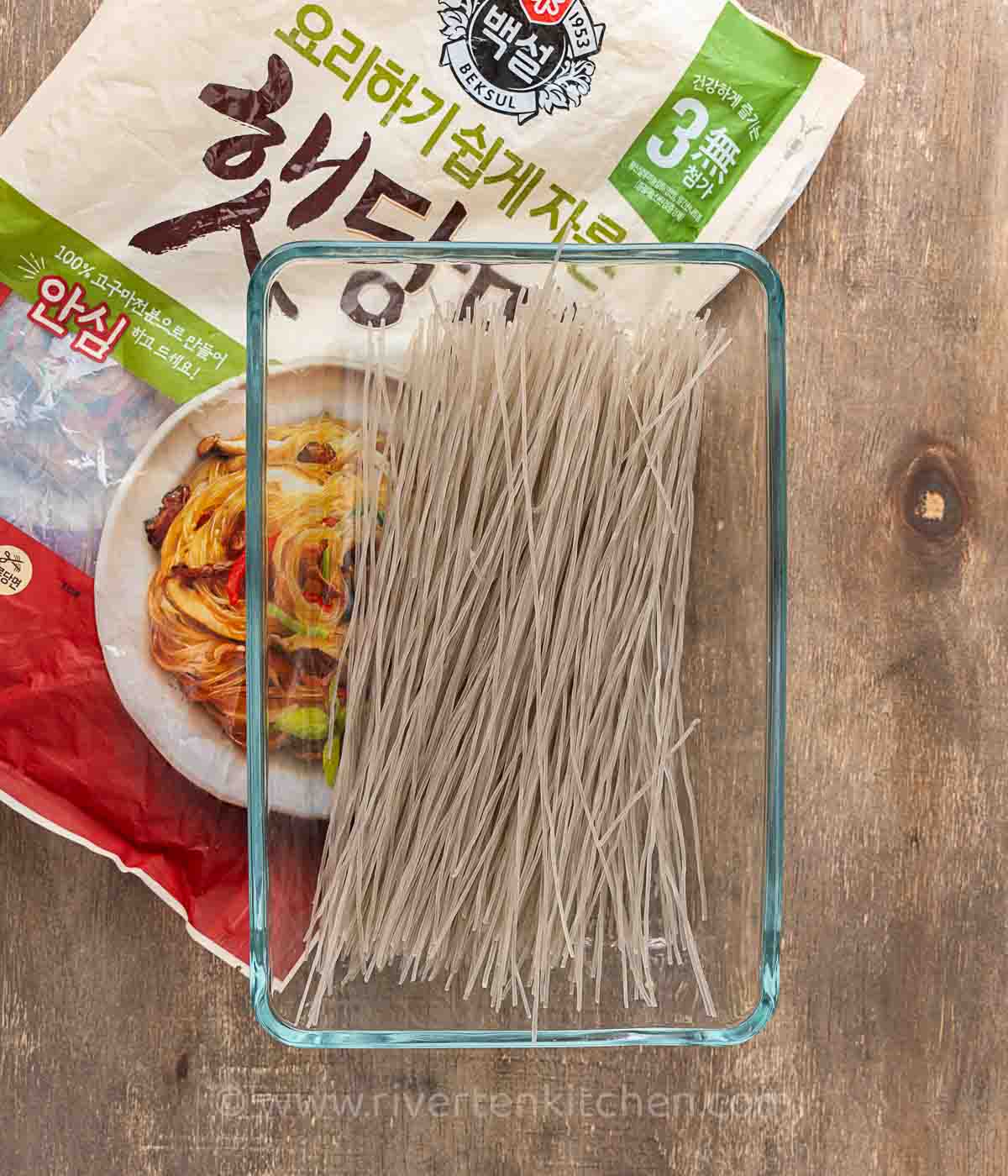
These noodles are sometimes labeled as “sweet potato noodles” or “dangmyeon” in Korean. They have a chewy texture and absorb the flavors of the sauce and vegetables well, making them a key component of Japchae.
Vegetables and Other Add-ins
If I were to choose vegetables for Japchae, these would be on top of my list as they not only give color but also give the dish a wonderful flavor.
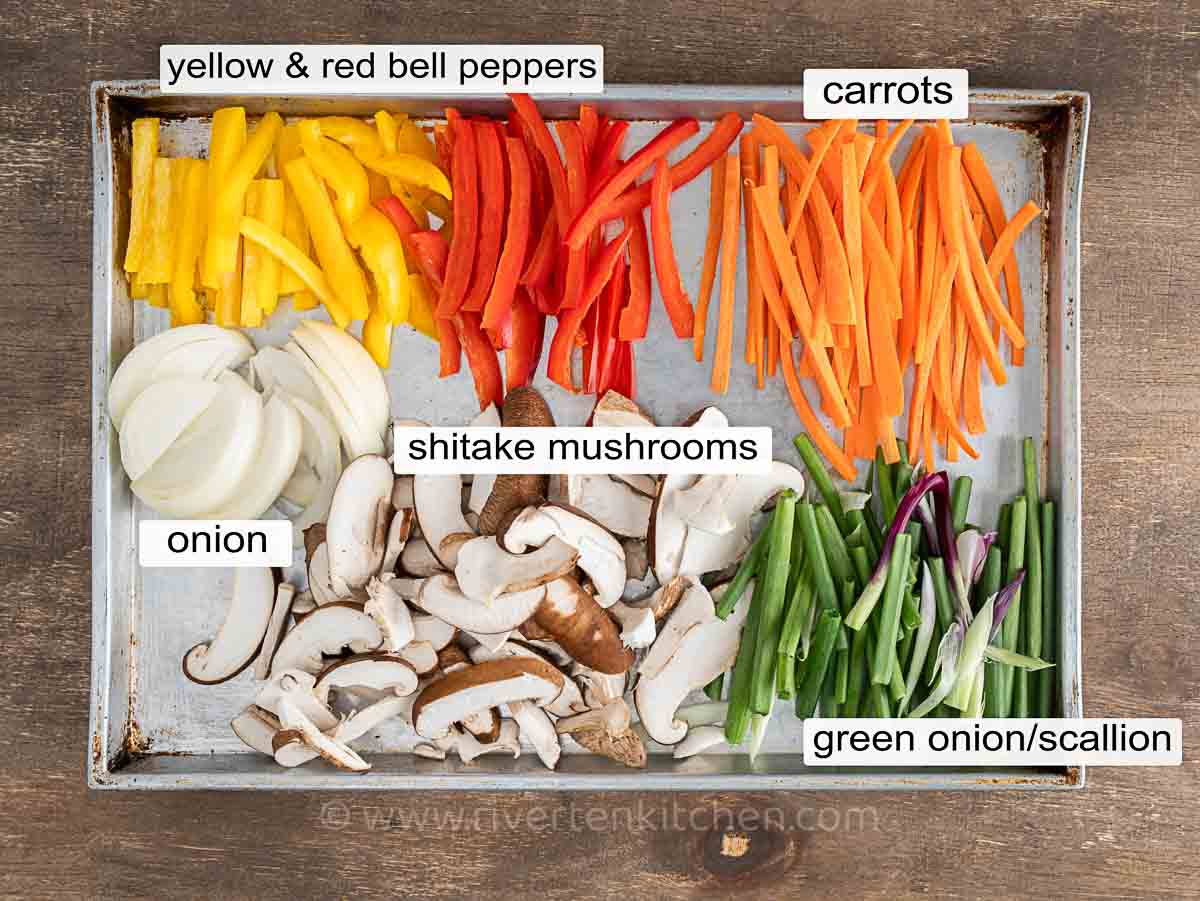
- Shiitake Mushrooms – The best mushrooms for Japchae for its unique and smoky flavor. You can also use shimeji, portobello, button, and even wood ear mushrooms.
- Bell Pepper – I recommend red bell pepper and yellow bell pepper for color and mild flavor.
- Green onion leaves or scallions
- Carrots
- Yellow onion
And of course, if I’m feeling generous, I would also add slices of scrambled egg, spinach, zucchini, and tofu for extra protein.
Japchae Sauce
To make the sweet-savory japchae sauce, you will need soy sauce, brown sugar, garlic, and black pepper. Sesame oil is then added towards the end of the cooking to give the dish its signature Korean flavor and aroma.
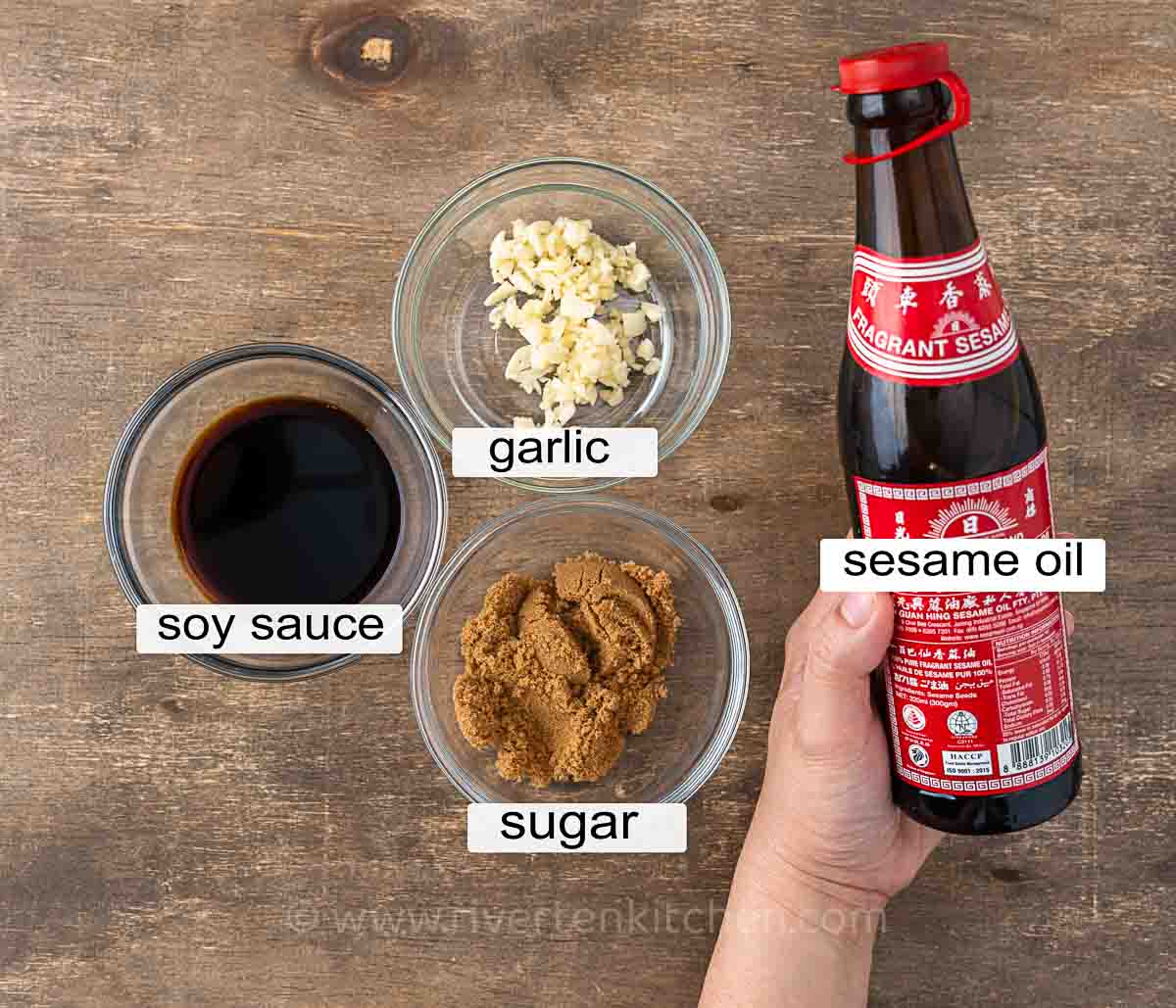
How to Make It
Let’s break down the simplest way to make japchae into just 5 steps:
- Make the sauce
- Slice and marinate the beef
- Soak the noodles – use a timer to prevent overcooking.
- Slice the vegetables
- Stir-fry – start with the beef, followed by the vegetables then the noodles.
Easy!
1. Make the Sauce
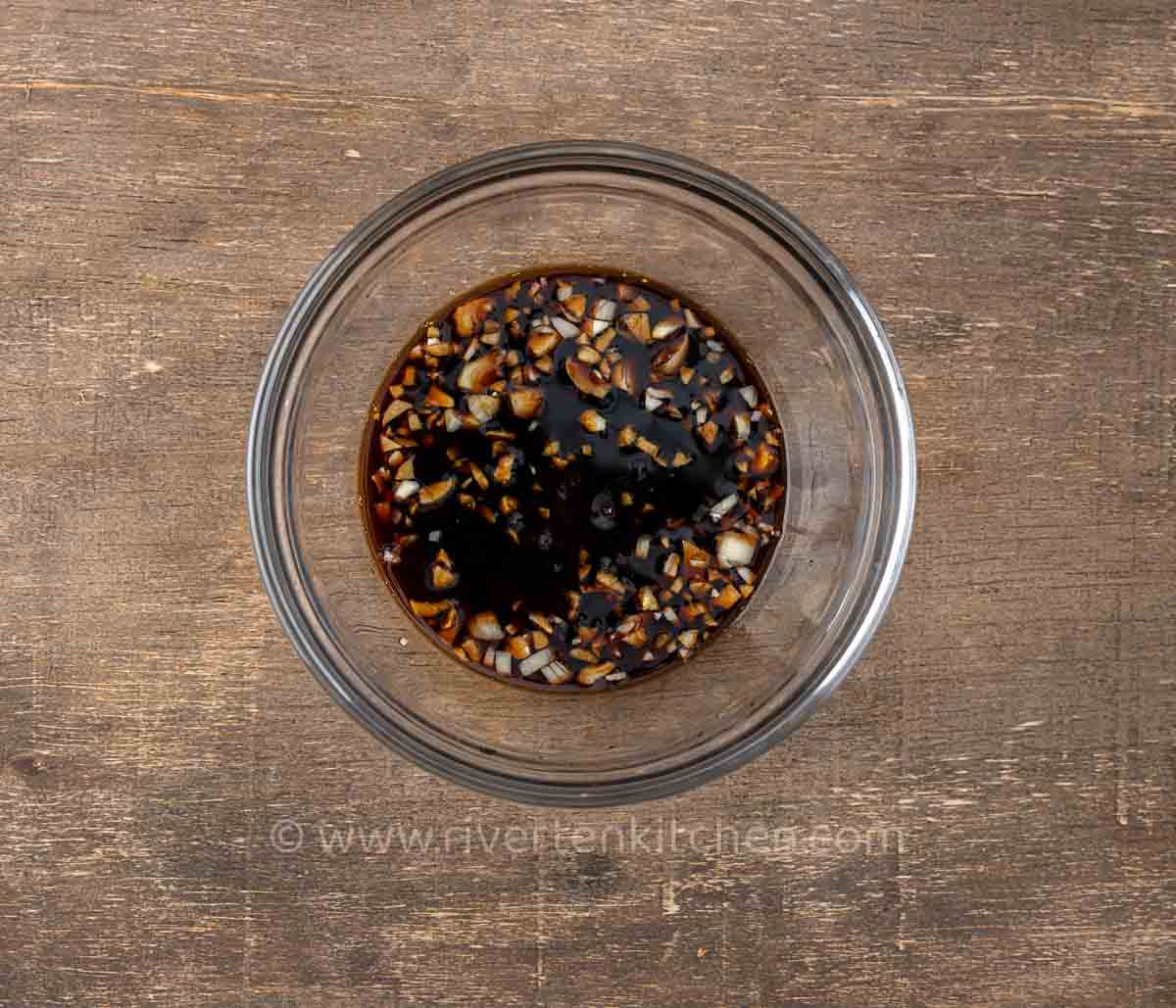
It’s as easy as combining all the ingredients in a bowl. Stir well until the sugar is completely dissolved.
2. Marinate the beef
Marinate the beef in a tablespoon of the sauce and optional mirin for an extra layer of flavor. Since we’re using thin slices, you only need 10 minutes of marination for the meat to absorb the flavor.
3. Soak the noodles
Instead of boiling the sweet potato starch noodles in a separate pot, we will soak it in freshly boiled water for around 10 minutes.
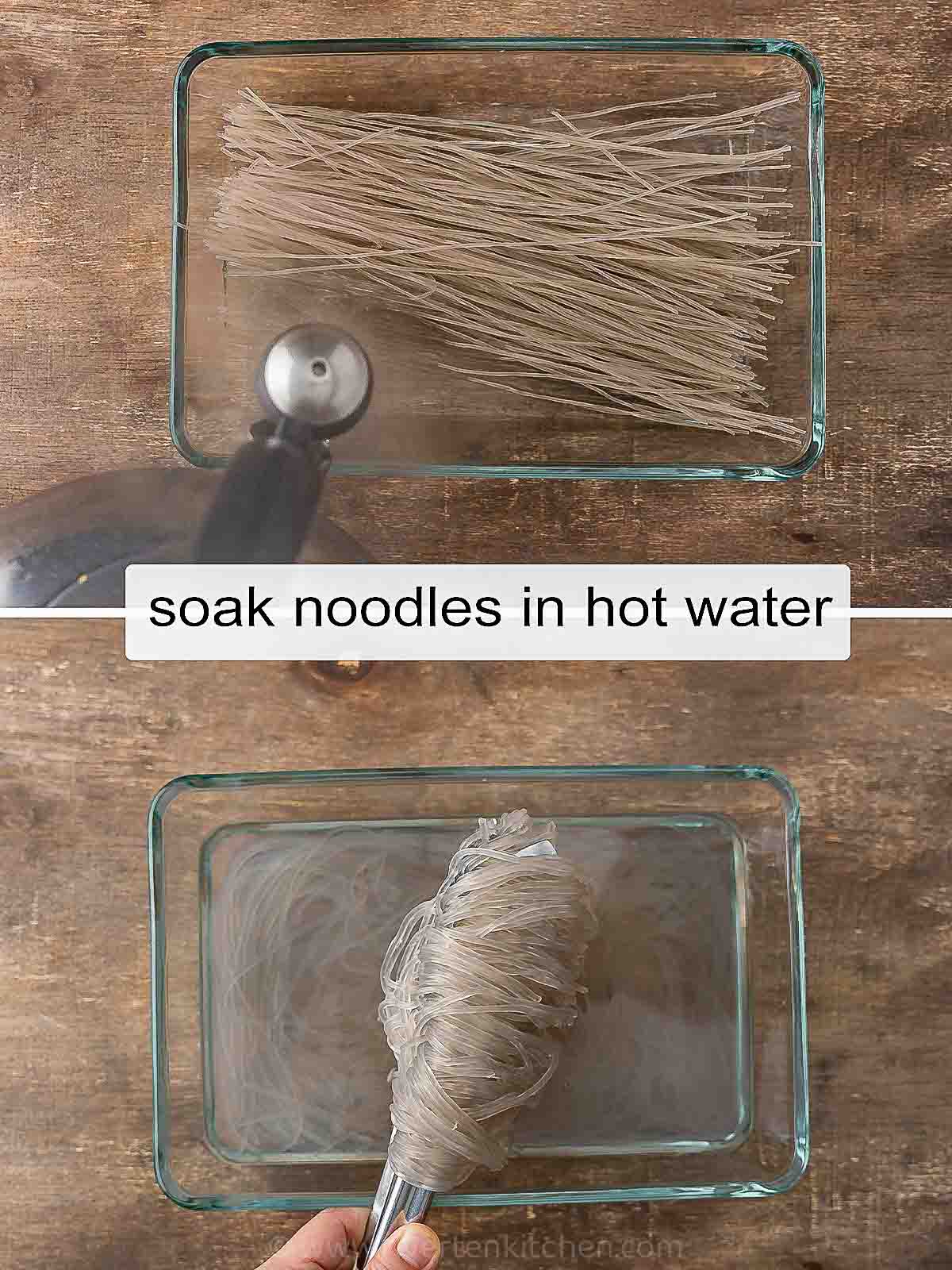
It will quickly soften so best to use a kitchen timer to prevent the noodles from overcooking. While the noodles are soaking, proceed to slice and prepare the remaining ingredients. This is where we significantly cut down on preparation time.
4. Slice the vegetables
Slicing vegetables for japchae is a straightforward process that involves creating uniform pieces for even cooking.
Thin matchstick cuts work well for carrots, while bell peppers are best sliced into thin strips. Spinach leaves can be kept whole or torn into smaller pieces after removing tough stems.
For shiitake mushrooms, slice the caps after removing stems, and cut green onions into 2 to 3-inch lengths, incorporating both parts.
5. Stir-fry
Once all the key ingredients are ready, it’s time to stir-fry!
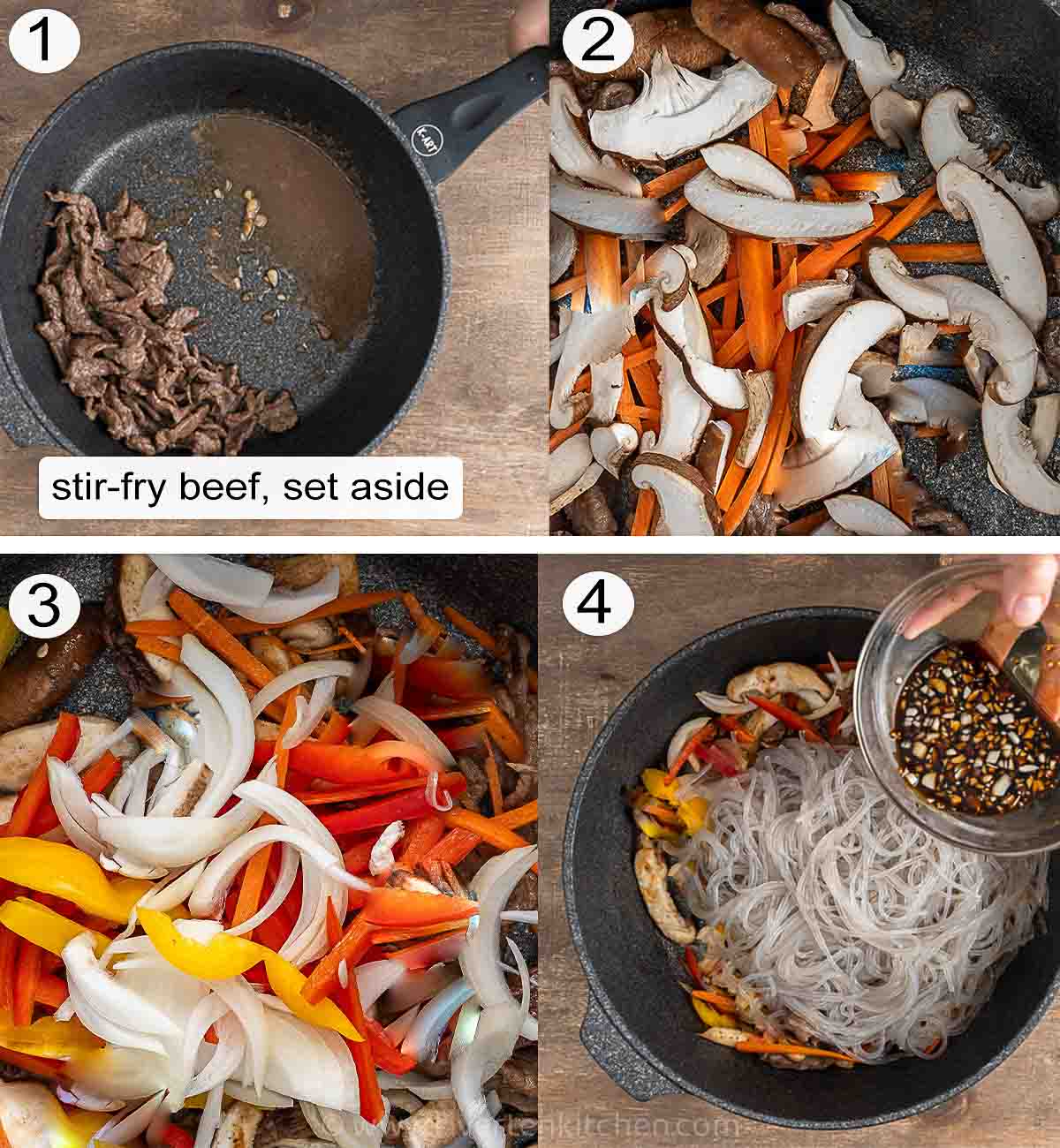
- Stir-fry the marinated beef in hot oil until brown, around 2 to 3 minutes. Season with a pinch of salt and black pepper. Transfer to a plate and set aside to prevent overcooking. Remove and discard any excess liquid.
- Cook the vegetables starting with the carrots and mushrooms.
- After 2 minutes add bell peppers and onion and stir-fry for a few seconds.
- Add the noodles, sauce and water. Toss everything together until the noodles are fully cooked and coated with the sauce.
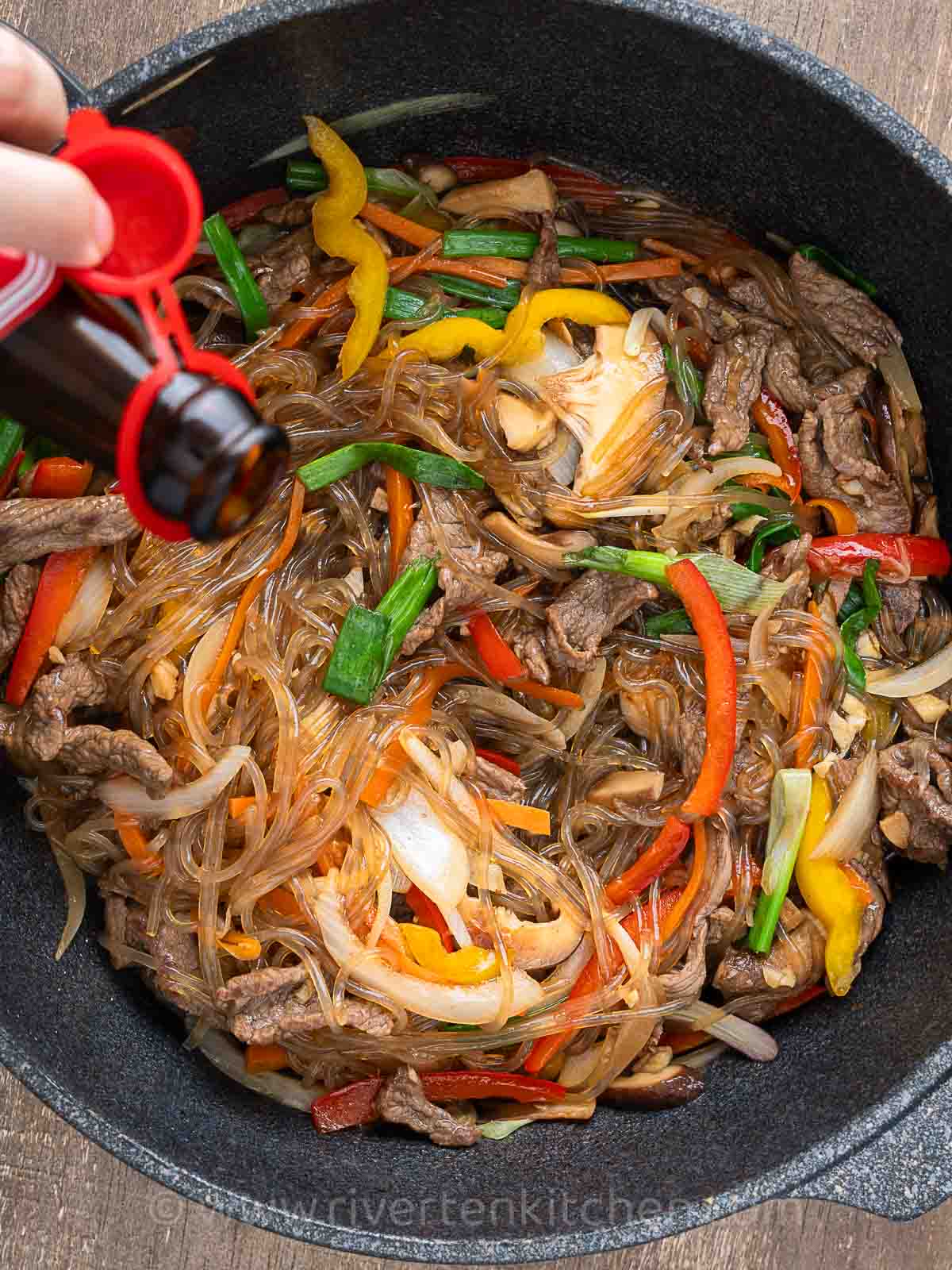
Add back the beef, and drizzle with sesame oil and sesame seeds. Give it a final toss. Quickly remove the skillet from heat to prevent overcooking.
Let’s eat!
Shelf-life and Storage
Leftover Japchae can be stored in the refrigerator for up to 3 to 4 days. To extend its shelf life, make sure to keep it in an airtight container to prevent moisture and odors from affecting the flavors.
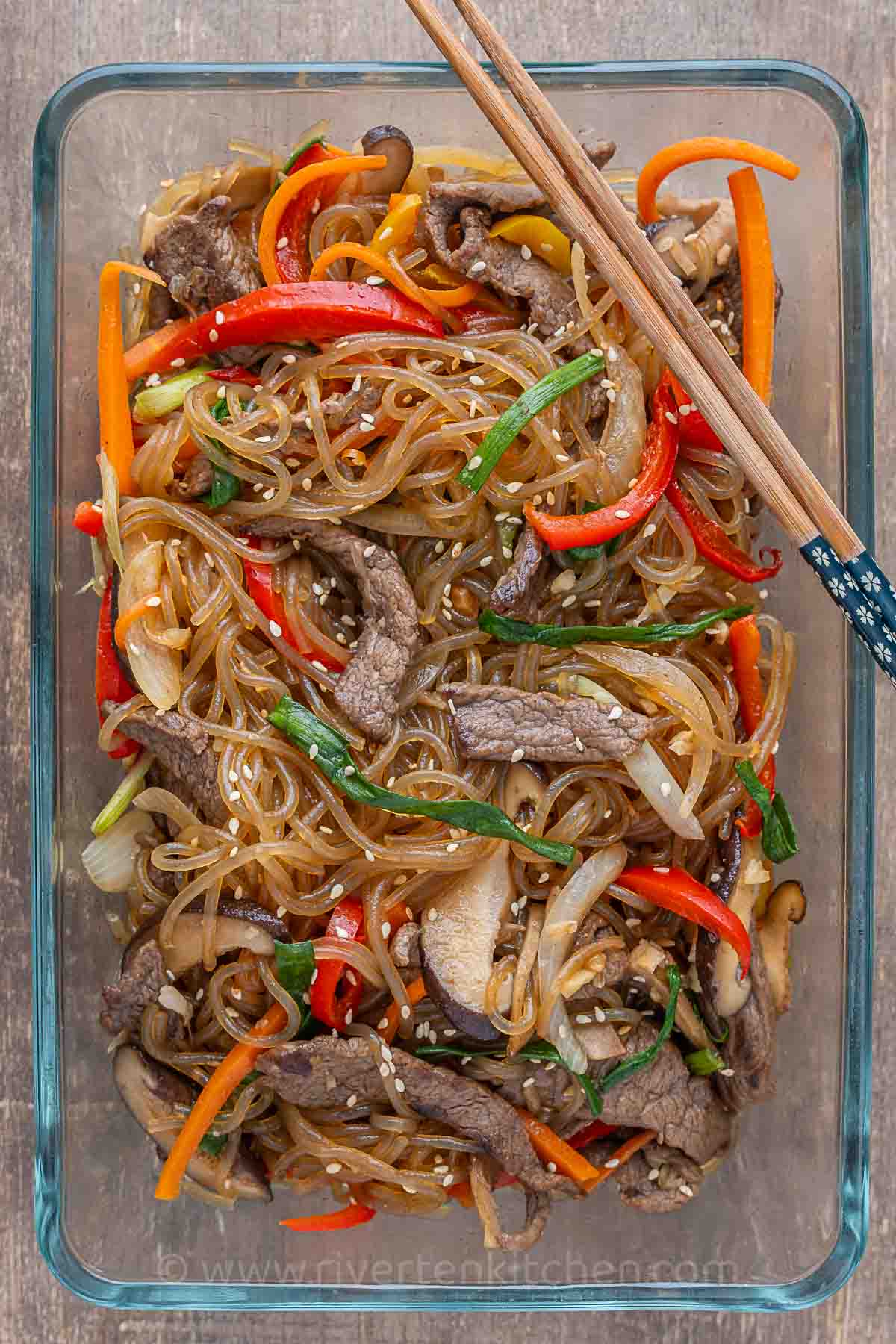
When reheating, use methods that preserve the dish’s texture and taste, such as gently heating it in a pan or a microwave with a splash of water to prevent drying out.
Love Korean food? Try these next
- Spam Kimchi Fried Rice
- Easy Ground Beef Bulgogi
- Korean Dumpling Sauce
- Soy Garlic Crispy Chicken Wings
- Salmon Gochujang
- Easy Korean Bibimbap
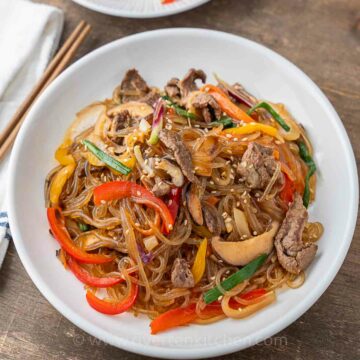
Easy Korean Japchae (One-Pan!)
Ingredients
Japchae Sauce
- ¼ cup soy sauce (note 1)
- 2 tbsp brown sugar (packed, add more if preferred)
- 2 cloves garlic (finely chopped)
Beef
- 8 oz sliced beef (note 2)
- 1 tbsp mirin
- 2 tbsp vegetable oil (for stir-fry)
Vegetables and Noodles
- 7 oz Korean sweet potato glass noodles (2 bundles, note 3)
- 3 pieces Shitake mushrooms
- ½ carrots (julienned)
- 1 small yellow bell pepper or mix with red bell pepper (julienned)
- 5 stalks green onion (cut 2-3 inches in length)
- ½ yellow onion (sliced)
- ¼ cup water
- 2 tablespoons sesame oil
- salt and ground black pepper (to taste)
- roasted sesame seeds (optional)
Instructions
Make the sauce
- Combine all ingredients in a small bowl. Stir until sugar is dissolved.
Marinate the beef
- Place beef in a bowl. Add 1 tablespoon of the prepared sauce and mirin. Stir to combine. Set aside.
Soak the noodles (note 4)
- Soak noodles in freshly boiled water for 10 minutes. If using warm water, soak for up to 15 minutes until it's pliable without being completely cooked. Once done, drain and discard the water. Meanwhile, prepare the rest of the ingredients.
Stir-fry
- Stir-fry the beef – Add 1 tbsp oil in a skillet heat over high heat. Once it gets nice and hot, add the marinated beef. Stir-fry until no longer pink, around 2 to 3 minutes. Season with salt and black pepper. Transfer to a plate and set aside to prevent overcooking. Remove and discard any excess liquid.
- Vegetables – Pour the remaining vegetable oil and set the heat to medium. Add carrots and mushrooms, stir-fry for 1 minute. Add bell peppers and onion. Continue cooking for another minute or until the veggies are halfway cooked.
- Add noodles, sauce, and water. Season with black pepper. Toss everything together until the noodles are cooked and glossy. Do not overcook.
- Immediately remove from heat. Add back the beef, and green onions and drizzle sesame oil. Give it a final toss to bring it all together.
- Serve and enjoy! Sprinkle sesame seeds on top if preferred.
Recipe Notes & Tips:
- Soy sauce – Use regular all-purpose soy sauce e.g. Kikkoman. Light, dark, and low-sodium soy sauce are not recommended.
- Beef – Recommended cuts are thinly sliced sirloin steak, ribeye, tenderloin, and top sirloin are popular choices. If you’re looking for budget-friendly choices, skirt steaks, flank steaks, and flat iron steaks also work great.
- Glass Noodles – Sometimes labeled as “sweet potato noodles” or “dangmyeon” in Korean. Available online and in most Asian grocery stores.
- Soaking the Noodles – The noodles will quickly soften using freshly boiled water. If you need more time to prepare and slice the rest of the ingredients, use hot to warm water instead.
Riverten Kitchen is a participant in the Amazon Services LLC Associates Program, an affiliate advertising program designed to provide a means for sites to earn advertising fees by advertising and linking to amazon.com

